Do you want to learn How to Prune Roses, but think it’s too hard and time-consuming?
Are you afraid that you’ll accidentally kill your roses by pruning them?
Pruning Roses takes a little bit of time and research, but the reward of beautiful flower blooms is well worth the effort.
After years of pruning my own roses, spending countless hours at nurseries and with flower gardeners, and talking with rose experts I have created How to Prune Roses (15 Most Effective Tips).
This article is the perfect guide for both beginner and advanced rose gardeners.
It is intended to not only give you the best tips but also provide you with how to prune ALL rose types.
Why Prune Roses?
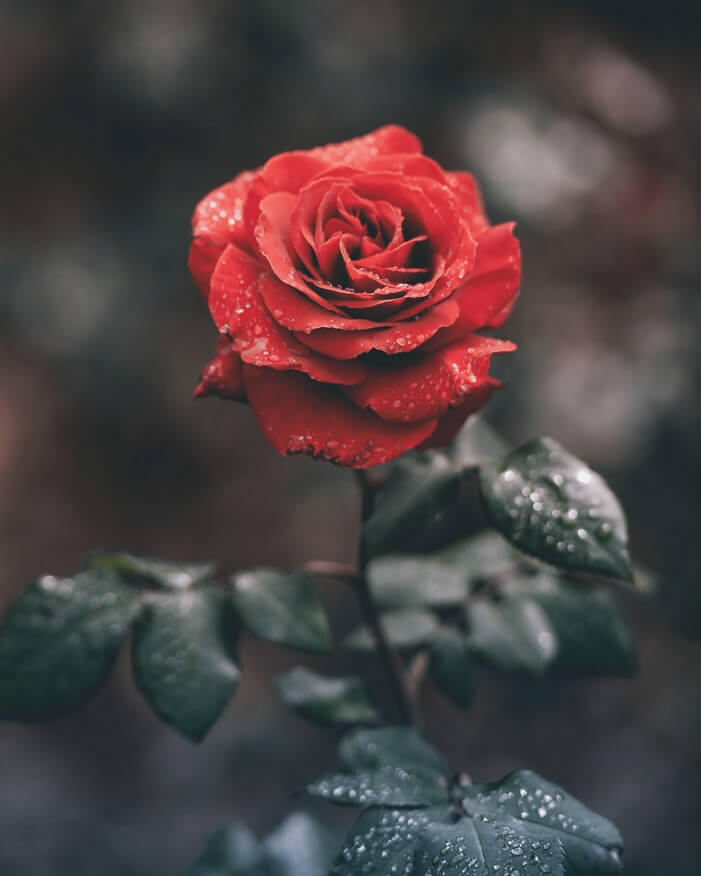
Before learning how to prune roses, it is important to learn why you should prune them.
Pruning Roses can provide several critical benefits to the health of the plants.
You should prune roses to remove dead and diseased plants to enhance plant health, promote new growth, and reduce the risk of diseases spreading throughout your garden.
Also, you should prune roses to rejuvenate and encourage more flower blooms throughout the year.
Finally, pruning roses can encourage airflow and control the size of your rose plant. Roses have been known to grow to over 10 feet tall!
Types of Roses
Before you prune your roses, it is first important to have an understanding of what type of rose plant you have.
In general, you will follow very similar tips to pruning roses. But certain types of roses will require very specific steps that are different than other roses.
Roses can be classified as either Modern, Ramblers, Everbloomers, or Climbers.
Modern Roses
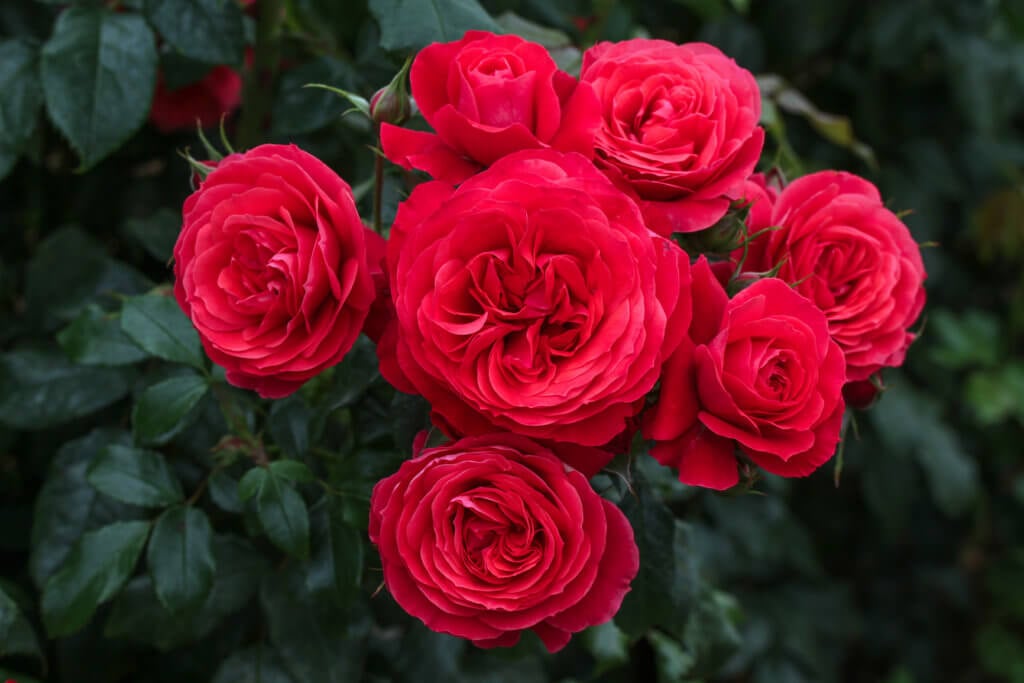
When most gardeners think of roses they think of modern roses.
Modern roses bloom once a year on new growth every year.
Modern roses are also some of the easiest roses to prune and pruning should be performed in early spring.
Some examples of modern roses include hybrid tea, Grandiflora, and floribundas.
Ramblers
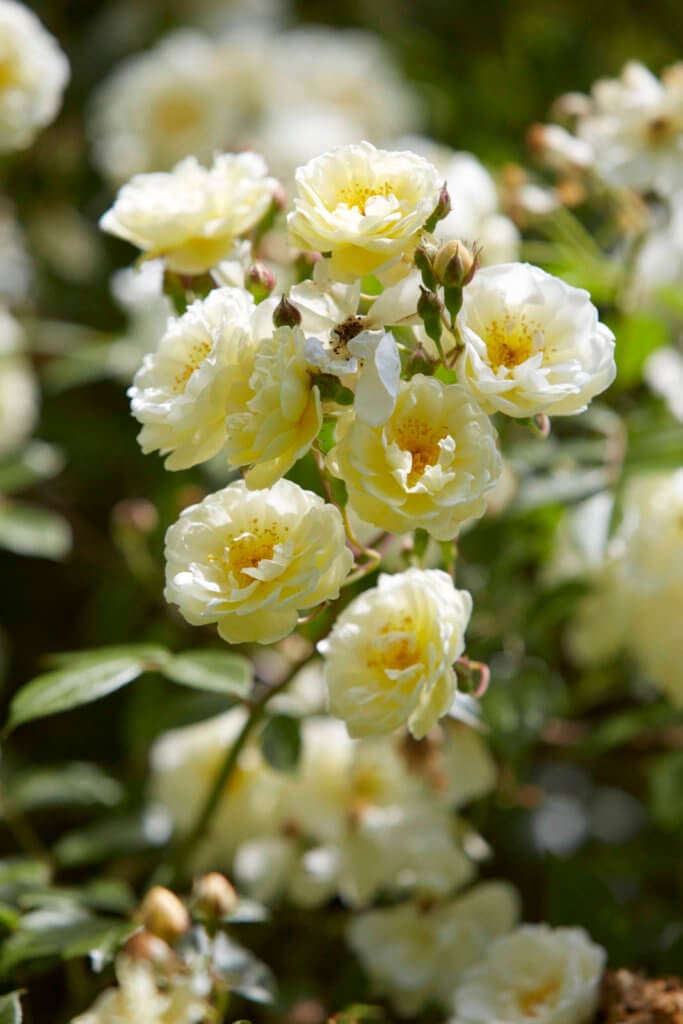
Rambler roses are some of the more uncommon types of roses, but also some of the beautiful roses gardeners can grow.
Rambler roses bloom once a year on old wood.
Typically, you will prune this type of rose right after flowering.
Some types of Rambler Roses include Malvern Hills and Snow Goose.
Everblooming
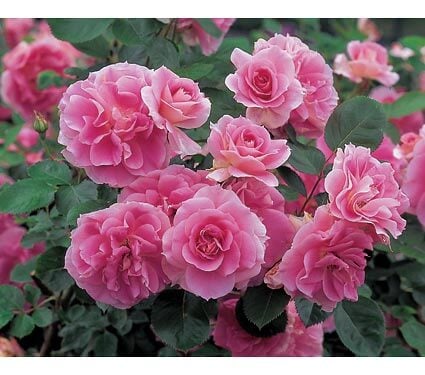
If you are interested in roses that bloom throughout the year then look no further than Everblooming roses.
Everblooming roses are roses that bloom continuously on mature, but not old woody stems.
This type of rose is very easy and simple to prune.
Some examples of everblooming roses include knock-out, double knock-out, and fairy roses.
Climbers
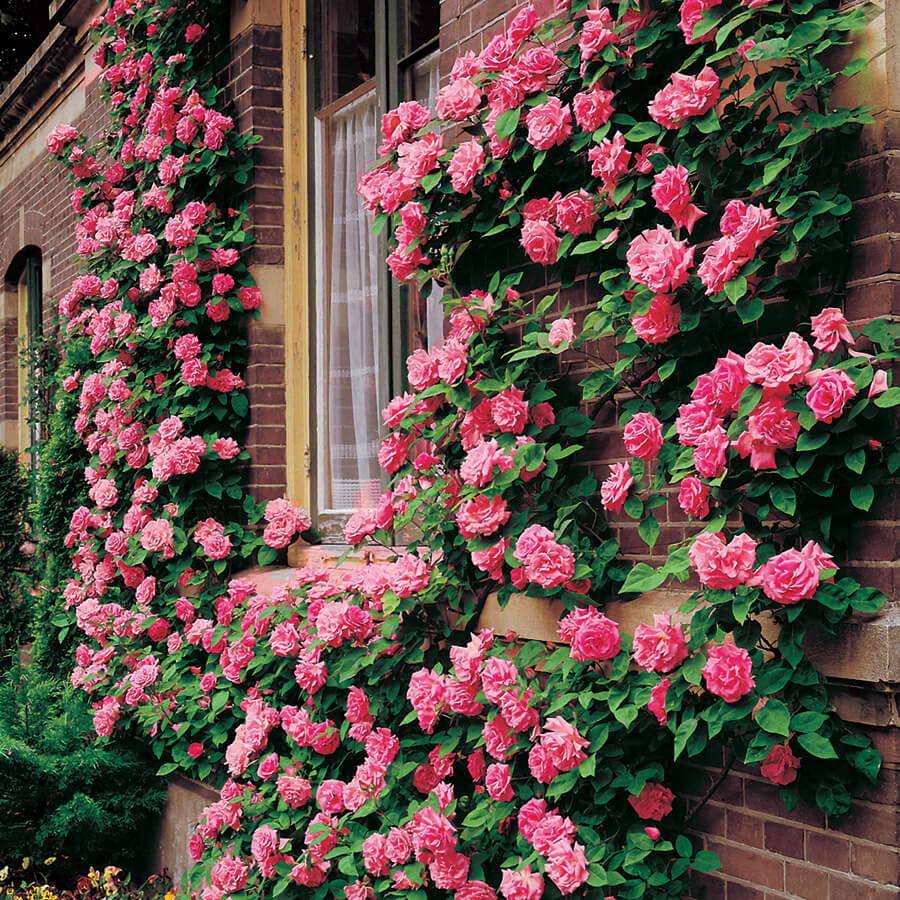
Climber roses are some of the most unique and popular roses throughout the world.
This type of rose may repeat bloom several times a year and typically are pruned after flowering to shape the bush.
An example of a climbing rose is William Baffin rose.
Where to Grow Roses
One of the best parts about Roses is that they can be grown almost anywhere in the world.
It should be noted though that they thrive in warmer climates with mild winters.
If you are interested in growing a specific type of rose then I recommend having an understanding of what hardiness zone you are in and what hardiness zone they can grow in.
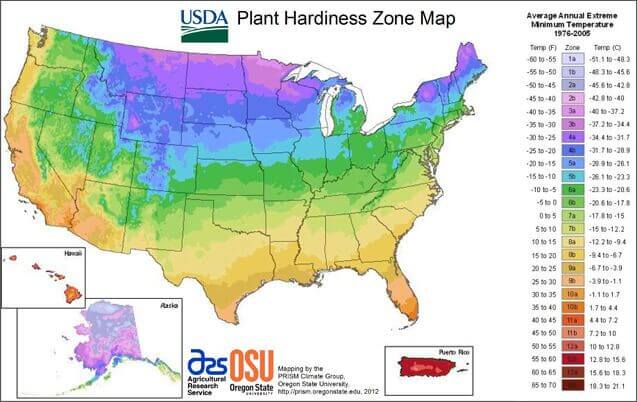
Find what hardiness zone you are in here.
Where to Buy Roses
You can purchase Roses from local flower shops, nurseries, or even lowes.
My recommendation though is to purchase it through Amazon.
This guarantees fast delivery and a plant that is in great shape.
In addition, they provide you with the greatest variety at the best price.
General Rose Pruning Tips (#1-7)
If you want to learn How to Prune Roses there are several general tips you should follow, no matter the type.
If you want to do it in the most effective way possible then I recommend using the guide below.
1. Remove Dead Rose Petals and Leaves
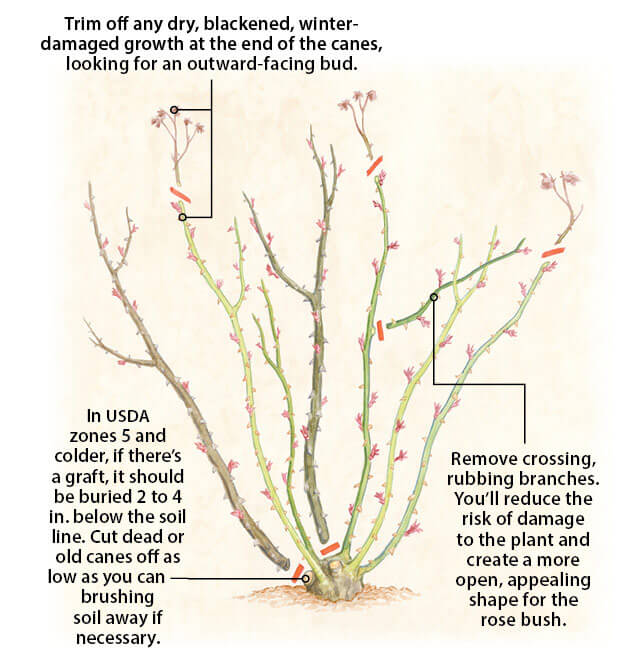
No matter what type of Rose plant you have always remove dead petals and leaves in the early spring after the last frost.
Removing dead rose petals and leaves will help reduce getting and spreading diseases.
It will also help deter pests from being attracted to your rose plant.
And finally, it will allow you to better see your rose plant for pruning.
2. Prune Dead Wood
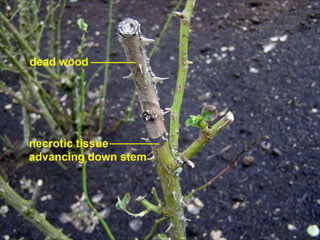
No matter what type of rose plant you have, you should always prune dead wood in early spring after the last frost.
You know wood is dead if it is a light to dark brown color.
My recommendation is cutting the dead-wood to where it becomes live wood. Live wood is always a green color.
Pruning dead wood will promote growth, more blooms, and reduce the likelihood of pests and disease.
3. Cut Crossing Branches

No matter what type of Rose plant you have you’ll also want to cut crossing branches.
You want to remove crossing branches to promote growth and shape.
More specifically, removing these branches will reduce the risk of damage to the plant.
There is nothing worse than putting the time and effort in growing roses only to have your plant become damaged or die.
4. Cut Pencil-Thin Branches
Not only should you prune dead wood, leaves, and crossing-branches, but you will want to cut any branches that are less than the diameter of pencils.
These branches typically do not produce blooming flowers.
Also, these branches will crowd flower producing branches limiting the amount of sun and nutrients they will get.
5. Prune Branches THIS Way
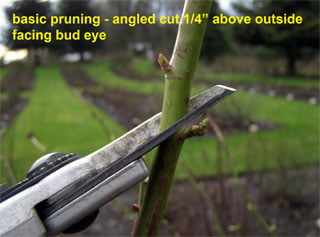
No matter what Rose type you plan on pruning there is a specific way that it needs to be done.
Prune 1/4 inch above the outward flowering bud. The flowering bud is a small bump where the leaf meets the stem.
Then make a 45 degree cut sloping away from the bud, so water can fall off. It should be noted that new stems grow in the direction of the bud.
If you prefer to learn by watching a video then you’ll love the below tutorial.
6. Use a Pruning Sealer
Pruning your rose is a great way to promote a healthy, flowering plant, but sometimes you need a little help.
If you want your rose plant to heal as quickly as possible then you’ll want to purchase a pruning sealer.
Pruning Sealers not only help your rose plant to heal, but it also helps minimize the potential for disease and pests.
7. Clean, Clean, Clean
This may seem like an obvious tip to you, but it can dramatically improve the health of your rose plant and the number of flowers you get every year.
After pruning your plant, make sure to clean in and around your rose plant.
Remove any debris, leaves, fungus, and branches that you have either prune or that have fallen off over the year.
How to Prune Modern Roses (Tip #8)
If you want to have the most effective success pruning modern roses then follow the simple steps below:
- In early spring, after the last frost, start your pruning.
- You will want to prune hard. This means cutting branches down to about half their size. Make sure to remove all woody stems.
- Prune 1/4 inch above the outward flowering bud. The flowering bud is a small bump where the leaf meets the stem. When pruning make a 45 degree cut sloping away from the bud, so water can fall off.
- Leave 3 to 5 canes evenly spaced around the plant at various lengths. You want the rose bush to have a vase shape, with middle stems removed.
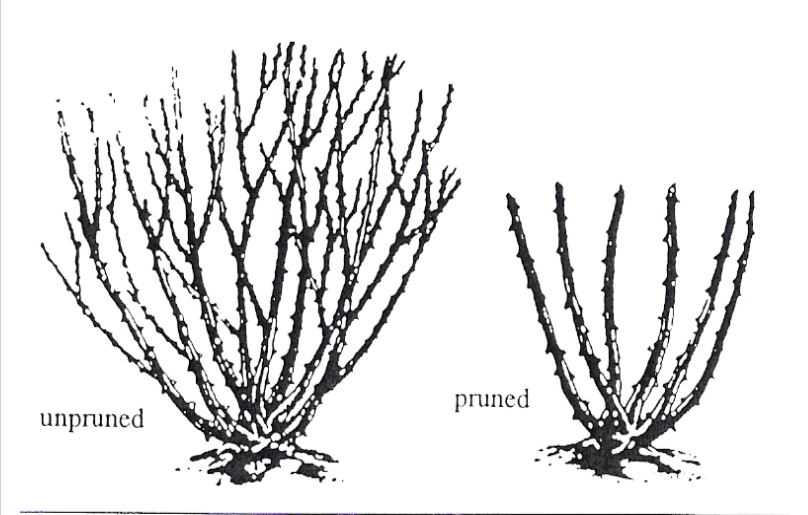
How to Prune Rambler Roses (Tip #9)
Rambler Roses require a slightly different pruning technique than modern roses.
If you want the most success then follow the below EFFECTIVE tips.
- In early spring, remove winter damage and dead wood to keel the plant’s size in shape.
- You will want to prune light. This means cutting branches down to about 3/4 their size.
- After your flowers bloom and die once you can prune hard.
- Prune 1/4 inch above the outward flowering bud. The flowering bud is a small bump where the leaf meets the stem. When pruning make a 45 degree cut sloping away from the bud, so water can fall off.
- Leave 2 to 3 canes long canes. What canes you leave does not matter.
How to Prune Everblooming Roses (Tip #10)
Everblooming roses are the easiest roses to be prune for beginners.
Follow the simple and quick steps below for more, bigger, and better blooms all year long.
- Do not prune your everblooming roses for the first two years. This will increase the vigor and plant growth and flower bloom.
- In early spring, after the last frost, start your pruning.
- You will want to prune hard. This means cutting branches down to about 1/3 their size. Make sure to remove all woody stems.
- Prune 1/4 inch above the outward flowering bud. The flowering bud is a small bump where the leaf meets the stem. When pruning, make a 45 degree cut sloping away from the bud, so water can fall off.
- After your flowers bloom and begin to wilt, you can deadhead the flower. Deadhead is when you cut the flower off right above the next flowering bud.
How to Prune Climbing Roses (Tip #11)
Pruning Climbing roses may be the hardest type of rose plant to prune.
However, with a few simple tips, you can quickly become an expert.
- In early spring, remove winter damage and dead wood to keel the plant’s size in shape.
- You will want to prune light. This means cutting branches down to about 3/4 their size.
- After your flowers bloom and die once you can prune hard. It should be noted that climbing roses can bloom more than once.
- Prune 1/4 inch above the outward flowering bud. The flowering bud is a small bump where the leaf meets the stem. When pruning make a 45 degree cut sloping away from the bud, so water can fall off.
- Prune your roses to shape a small bush. You will want to do this to keep your roses in check. Climbing roses can grow to over 20 feet tall if you do not prune them.
Use THESE Tips for More Blooms (Tip #12-15)
While pruning can promote rose plant growth and more blooms there are several other tips that you can use to get bigger, better, and more flowers on your plant this year.
12. Plant Site
If you want to have excellent plant growth and more blooms then you’ll want to make sure you plant your rose plant in the correct area.
Rose plants thrive in excellent draining soil. They also do well in areas that receive little to moderate rainfall in a year.
They should also have at least 6 hours of sun exposure, but up to 12 hours is suitable.
When planting your roses make sure you have a mixture of 50% compost and 50% moss and garden soil.
To learn more about the best ways to plant your roses please take a minute to watch the below video:
13. Plant THESE Roses
Some roses are easier to grow and maintain than others.
Not only this, but some roses naturally produce more flowers every year than others.
If you want more flower blooms this year then I recommend planting the following roses:
- Bright Melody
- Carefree Delight
- Fair Moss
- Graham Thomas
- Knock Out and Double Knock Out
- Fairy
- Fourth of July
- French Lace
- Touch of Class
14. Use Rose Fertilizer
If you want to have more and better blooms this year then use Rose Fertilizer.
Rose Fertilizer can be used for all types of rose plants.
Never apply fertilizer to your rose plants when you have flowers on the plant. Nutrients will flow more to the flowers and less to promoting plant growth.
If you want to have the best success with your fertilizer then use it in early spring.
15. Use Insecticide & Fungicide
One of the main reasons that roses don’t produce as many flowers as they should is because they have been infested by insects.
Prevent this and promote healthy plant growth and flower bloom by using an Insecticide.
The insecticide will help prevent insects from infesting your roses and can potentially kill insects once they have attacked your plant.
Another main reason that roses don’t produce as many flowers as they should is that they a disease.
Prevent this and promote healthy plant growth and flower bloom by using a Fungicide.
The fungicide will help prevent diseases, mold, and fungus from infecting your roses.
Use These Garden Tools (Bonus Tips)
If you want to make pruning easy, effective, and safe then you will want to make sure you buy the correct Garden Tools and clothing.
I recommend the following cost-effective garden tools that every gardener should have if they plan on pruning.
Buy a Good Pair of Garden Gloves
Because roses have sharp thorns it is important to buy a pair of garden gloves to protect your hands from getting poked and cut.
The problem with most garden gloves is that they are so thick you can’t use them for anything else.
Eliminate this problem and buy a pair of versatile garden gloves that can be used for all your gardening needs.
Buy a pair of Pruning Shears
The most important tool to pruning your roses is a great pair of pruning shears.
You will want to buy a pair of pruning shears that are made of heavy-duty steel or titanium.
Also, you will want to make sure your pruning shears can cut at least 1/2 diameter branches. You won’t find rose canes with a diameter much bigger than this.
And if you can find a pair that is stick-resistant against sap that is even better.
If you want to learn more about the best pruning shears on the market then check out my article 12 Best Pruning Shears.
Wear a Long-Sleeve Shirt
Just like pruning roses without gloves can result in cuts and bleeding, it can also result in the same outcome if you do not wear a long-sleeve gardening shirt.
Wear Gardening Pants
And just like pruning roses without a long-sleeve gardening shirt can result in cuts and bleeding, it can also result in the same outcome if you do not wear gardening pants.
Summary
While pruning is not hard there are ESSENTIAL Tips that can make it as effective and efficient as possible.
Make sure you have the proper supplies before you begin. This will save you time, energy, and frustration. It will also make your job as easy as possible.
In addition, follow the 15 ESSENTIAL Tips and Caring Tips above. If you do this you will not fail. Also, see a few key reminders below:
- Remove dead rose petals and leaves. This will promote more flower growth and bloom.
- Prune Dead Wood. By promoting dead wood you will promote plant growth where more roses will bloom on.
- Cut crossing branches. These branches will block valuable sunlight to the rest of your rose plant.
- Cut pencil-thin branches. These branches do not help plant growth and flowers do not bloom on them.
- Prune rose branches by cutting 1/4 inch above the outward flowering bud. This will help nicely shape your plant, while promoting more blooms.
- Use a pruning sealer. This will help speed up the healing process and prevent diseases.
- Clean around your rose plant after you have have pruned. This will minimize diseases and pests.
- Remember, Modern Roses are the easiest type of roses to prune.
- Rambler roses take a special technique to prune them, but this is not difficult.
- Everblooming Roses are another incredibly easy type of rose to prune. It is usually the choice of beginner gardeners.
- Climber roses again should be pruned differently than modern and everblooming roses, but will not take much more time or energy to do.
- Pay special attention to where you plant your roses. They should be planted in well-draining, sun-lit areas.
- If you are a beginner rose-grower then I recommend planting one of the roses listed in the above section for low-maintenance and high blooms.
- Always fertilize your roses in early spring to promote plant growth.
- Use insecticide and fungicide. This will prevent disease and pests.
- Finally, make sure you buy a good pair of gardening gloves, pruning shears, a long-sleeve shirt, and a pair of gardening pants.
What’s Next?
If you enjoyed this article and want to learn more about gardening and pruning then I recommend reading the below articles:


